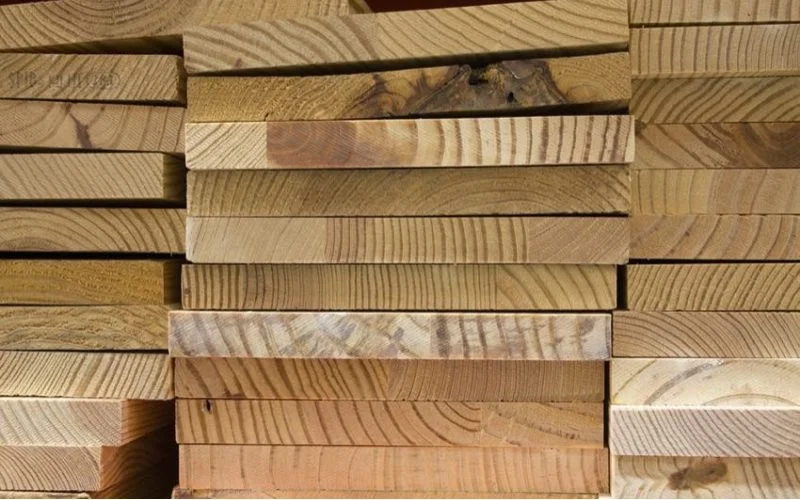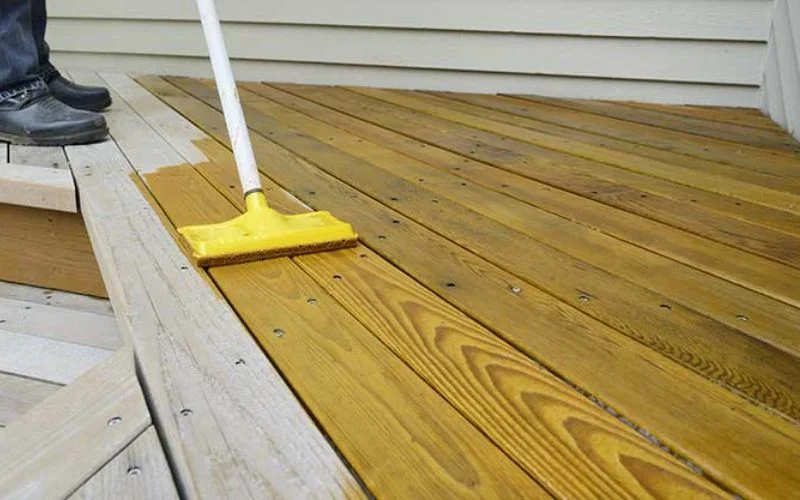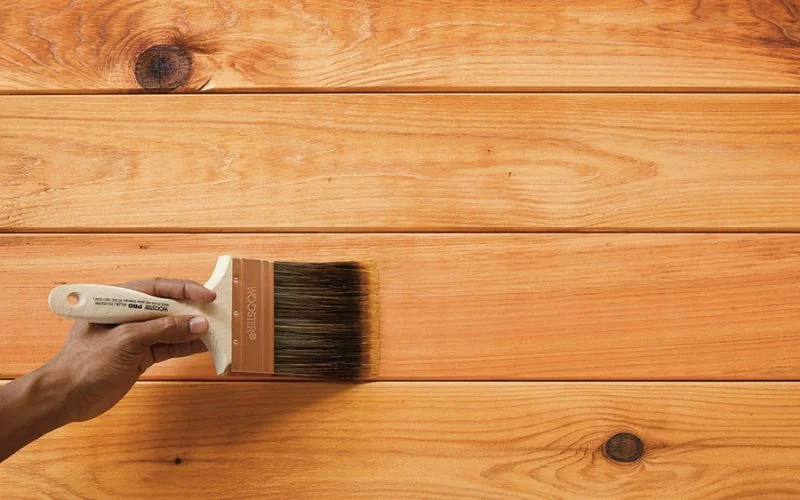Rot and decay are some of the most common problems of lumber and its products, and this problem can reduce a highly prized wood to almost dust; hence, some of these woods are treated with chemicals under high pressure to keep them from going rancid.
The chemical used in the pressure treatment of wood leaves them wet; hence, when paints are applied, they easily peel off.
Yes, you can paint pressure-treated wood, but you must ensure it is dry and apply a good primer if you want the paint to stick.
Read also: How Do I Choose a Pressure Washer Nozzle?
What Exactly Are Pressure-Treated Woods?

Wood that generally susceptible to attack by insects, but there are several ways this wood can be treated so that it can be resistant not only to attack by insects but also from the elements. One such wood preservation method is to pressure-treat the wood.
Pressure-treatment of wood is a technology by which the air in the wood is forced out as the wood is kept in a special depressurized holding tank, and then replacing the space left by the air is with water and chemicals, which ends up keeping the wood free from rot and decay. Softwoods such as southern yellow pine are best preserved by this method because it has proven effective in keeping this timber from rot.
What Materials Are Used In Pressures-treatment
Most people preserve wood with chemicals mixed in either a water- or oil-based solution. The most common water-based preservatives are copper compounds combined with fungicides or decay-preventing chemicals. Creosote or pentachlorophenol are the most commonly used oil-based preservatives, even though they are not ideal for home use.
The primary use of pressure-treated wood is for making fences, decks, and other outdoor furniture and structures. It is best not to use water-based pressure-treated wood indoors because it is unsafe.
Can You Paint Pressure-Treated Wood?

Yes, you should paint pressure-treated wood because even though the wood is not vulnerable to rot and decay, its surface can quickly become gray and splintery, which might lead to the wood weathering easily.
Secondly, for aesthetic reasons, you should change the color of your pressure-treated wood, especially if the hue does not fit into your home’s architecture or general theme. The wood should shine slightly, so add a coat or 2 of paint.
Sometimes, the chemicals like copper compounds used in pressure-treating wood begin to lose their effectiveness. When this happens, using exterior-grade paint is an excellent option to help with preservation.
Storing Pressure-Treated Wood
Upon purchasing your pressures-treated wood, you will notice that they are heavier and damp than usual. It is not uncommon because the “wetness” is because of the liquid preservative or solution used to treat the wood.
Sometimes you might even see some of these preservatives seeping out of the wood. Before this wood can be painted, it must be stored appropriately to become dry. It will take 2 to 4 months to get the wood dry enough to be painted.
Since it takes such a long time to dry pressure-treated wood thoroughly, it must be stored correctly to ensure that it doesn’t warp.
Here are some things to consider as you store your wood:
- Store them in a cool, dry place that has low humidity. If you have a storage shed, you can store the wood there.
- If you don’t want your pressured-treated wood to get warped, then you can place stickers or thin pieces of wood under the bottom piece of wood, which are spaced about 4 feet apart under the length of the board. You can stack the wood upwards in the same way too.
- You can kiln-dry the wood if you cannot wait for so long before using or painting the wood. Kiln drying involves stacking wood in a container and applying heat to help speed up the drying process.
Importance Of Drying Your Pressure-Treated Wood Before Painting
Painting pressure-treated wood is a little complicated because you will be dealing with wood with more moisture content than usual, and painting over wet wood has negative impacts.
Some of the effects of painting over wood with high moisture content include that the paints will peel off, crack, or blister and might even change color.
How To Paint Pressure-Treated Wood
To paints pressure-treated wood, you will need the following tools/ equipment:
- Paint roller
- Brush
- Roller cover
- 5-gallon bucket
- Putty knife
- Roller screen
- Moisture meter
- Brush with nylon bristles
The materials you need include:
- Exterior paint
- Exterior primer
- 2-part moldable epoxy resin kit (optional)
- Oxygenated cleaner
- 2-part epoxy wood consolidant
Cleaning The Surface
Before you paint any surfaces, you must ensure it is clean and free of dirt, grime, grease, stain, and debris because such materials can cause the paint to peel. It also applies to your pressure-treated wood. The chemicals used in preserving the wood might be seeping out of the wood and so must be properly cleaned off.
The best option for getting your pressure-treated wood clean is by washing, and for this, you will need a mild detergent, a garden hose with a jet nozzle, a bucket of water, and a stiff-bristled brush.
The first thing to do is to wet the wood surface and then give it a good scrub using the brush and some soapy water. Use the jet-nozzled garden hose to wash off the surface. You can also use the brush to remove all dirt, mold, and mildew on the wood.
Patch Up Any Crack
If there are any cracks in the pressure-treated wood, you can patch it up with epoxy resins, but before applying the resin, use a 2-part epoxy wood consolidant on the crack before applying the resins.
Test The Moisture Content Of The Wood
After cleaning and patching up cracks in the wood, please leave it to dry properly before attempting to paint it. Remember that wet wood will not hold the paints well but might peel or crack.
A moisture meter can test the pressure-treated wood’s internal dryness. For the external dryness, you can do the water sprinkle test. All you have to do is sprinkle a few drops of water on the surface of the wood, and if the water soaks in quickly in about 10 minutes, it means that the surface of the wood is dry enough to be painted.
Apply The Primer
With your wood clean and well-seasoned, it is time for you to apply primer. It would be best to have a high-quality primer to ensure that your adheres smoothly to the wood surface without peeling. It would be best to have a white exterior primer for lighter-colored wood and a tinted primer for darker wood.
Apply the primer on the wood surface with a paint roller and a paintbrush or spray to get to the wood’s crevices, nooks, and crannies. Afterward, leave the primer to dry for at least 24 hours before applying the paint.
Now Apply The Paint
Now that your wood is primed and dry, it is time to apply the paint. The best paint for pressure-treated wood is high-quality exterior latex paint. These exterior latex paints are water-based and are great on pressure-treated wood.
You should avoid using oil-based paints because they might not adhere to the wood as best as their water-based counterpart.
Pick a color of paint color that suits the wood or your home. You can use the paint roller to paint the wood and start by applying one coat first and then leave it to dry. You can apply a second cost of paint after 1 to 3 hours.
Conclusion
You would want to paint your pressures-treated wood for several reasons, from adding to its aesthetic appeal to helping the wood remain preserved against rot and decay after the preservatives have worn off.
- Helpful Links:
Ensuring the pressure-treated wood is clean, dry, and primed is your best option for great-looking painted wood.
Thanks for taking the time to read our article, and we hope you find it helpful. Would you mind leaving a comment below if you have any suggestions?
Kindly reach out to people by sharing this post on social media.
If you liked this article, then please follow us on Facebook, Instagram, and Pinterest.

